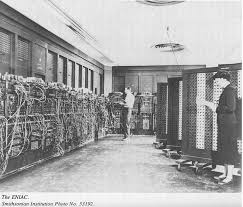1967年的图灵奖获得者-Maurice Vincent Wilkes
2006-08-18 19:47
821 查看
Maurice Vincent Wilkes (06/26/1913---)
图 灵 奖 获 得 时 间 :
1967 年 。 第二位 图 灵 奖获 得 者 。
图 灵 奖 引 用 (Turing Award Citation) :
“Professor Wilkes is best known as the builder and designer of the EDSAC, the first computer with an internally stored program. Built in 1949, the EDSAC used a mercury delay line memory. He is also known as the author, with Wheeler and Gill, of a volume on "Preparation of Programs for Electronic Digital Computers" in 1951, in which program libraries were effectively introduced.”
中 文 翻 译 :
” ( 授 予 Maurice V. Wilkes 图 灵 奖 以 表 彰 其 在 )Wikes 教授以设计和实现了第一台具有内部存储程序的计算机EDSAC而闻名。EDSAC在1949年5月成功运行并使用了汞(Mercury Delay Line)的存储器。与Wheeler和Gill一起, Wilkes教授在1951年出版了“Preparation of Programming for Electronic Digital Computers"一书。在这本书中,程序库的概念和用法被提出。
编 者 注 :
EDSAC: Electronic Delay Storage Automatic Calculator EDSAC项目是1946年开始的。
一般而言,学术与工业界认为,世界上第一台通用电子计算机是ENIAC(electronic numerical integrator and computer)。ENIAC是有美国宾州大学电子系Moore School of Electrical Engineering (University of Pennsylvania)在1943年到1946年设计的。其主要贡献者是J. Presper Eckert and John Mauchly。ENIAC不是含有存储器结构的计算机。1944年8月,John Mauchly和J. Presper Eckert提出了EDVAC(electronic discrete variable automatic computer)项目。
1944年,John Von Neumann(冯. 诺依漫)加入了ENIAC研发小组。深受图灵(Turing)的Universal Machine的启发,冯. .依漫强调了一个计算机必须具备存储器的结构,在1945年6月撰写了其著名的""First Draft of a report to the EDVAC”。这也就是我们常说的冯. 诺依漫机器结构。可惜的是,虽然EDVAC的设计在1946年就完成了,但直到1952年才完成。而此时,剑桥大学的Wilkes已经在1949年完成了EDSAC的设计与工程建造。或者我们说EDSAC是第一台诺依漫机器结构的电子计算机。
(ENIAC)




(EDSAC)
 |  |  |  |  |  |

(EDVAC)



目前关于是谁第一个提出存储结构的计算机体系结构,存在着许多不同的声音。 人们认为,在诺依漫加入ENIAC项目之前,John Mauchly和J. Presper Eckert就已经提出用水银来做存储器的想法并写下了一个内部备忘录。
“Around the summer of 1943, Mauchly and Eckert discussed the concept of creating a stored-program computer, in which an internal read-write memory would be used to store both instructions and data. This technique would allow the program to branch to alternate instruction sequences based on the results of previous calculations, as opposed to blindly following a pre-determined sequence of instructions. ”
“Eckert's idea was to use mercury delay lines (which he already knew a great deal about) for the memory. Around the beginning of 1944, Eckert wrote an internal memo on the subject and, in August 1944, Mauchly and Eckert proposed the building of another machine called the electronic discrete variable automatic computer (EDVAC).
Von Neumann:
John Mauchly and J. Presper Eckert
|
历史的许多往事是很难彻底清楚的。我们可以相信,在诺依漫写下其存储结构的计算机设计报告之前,这些想法都已经存在和被讨论过。从历史的长河来看,我们后来人都这些早期的科学家们都是一样的尊敬,是他/她们为人类带来了计算的美丽, 是他/她们创造了新的文明,
LINKS:
ENIAC Wiki: http://en.wikipedia.org/wiki/ENIAC
EDSAC Wiki: http://en.wikipedia.org/wiki/EDSAC
EDVAC Wiki: http://en.wikipedia.org/wiki/EDVAC
EDSAC 50周年的纪念活动:http://www.cl.cam.ac.uk/UoCCL/misc/EDSAC99/
更多的关于EDSAC的图片资料: http://www.cl.cam.ac.uk/Relics/archive_photos.html
Von Neumann: http://en.wikipedia.org/wiki/John_von_Neumann
Turing Award Lecture(图灵奖演讲文章):
“Computers Then and Now”, Journal of the ACM (JACM) Volume 15 , Issue 1 (January 1968) Pages: 1 – 7.
Presented at the ACM 20th Anniversary Conference, Washington, D.C., August 1967.
ABSTRACT
Reminiscences on the early developments leading to large scale electronic computers show that it took much longer than was expected for the first of the more ambitious and fully engineered computers to be completed and prove themselves in practical operation. Comments on the present computer field assess the needs for future development.
Maurice Vincent Wilkes简介:
Maurice Vincent Wilkes生于1913年6月26日,Staffordshire, 英国。是剑桥大学计算机实验室的所长,领导了整个EDSAC,第一台存储结构的电子计算机的设计与实现。同时,Wilkes也是现代程序设计中label(标号), macro(宏),microprogramming(ROM微码编程)的发明人。另外,与David Wheeler和Stanley Gill一起,发明了程序语言中子程序(subroutines)的概念与机制
Wilkes 1934年于St. John College获得其学士学位,1936年在剑桥大学获得其博士学位。其博士论文题目为“the propagation of very long radio waves in the ionosphere”。
Wilkes是在1946年5月,Leslie Comrie从美国回来并带来了von Neumann's First Draft of a Report on the EDVAC。 Wilkes读了一个晚上并相信存储器结构的计算机是正确的方向。
Wilkes然后得到了一个机会参加在UPENN的夏天讨论班。讨论班的题目是:”Theory and Techniques for Design of Electronic Digital Computers“。时间是7/8/1946--8/31/1946。这UPENN期间,Wilkes详细了解了ENIAC并参加了EDVAC 设计的讨论,并且认识了John Mauchly 和Presper Eckert 。
1946年的10月,Wilkes回到英国,并开始EDSAC的设计与实现工作。。。
http://ei.cs.vt.edu/~history/Wilkes.html
在剑桥大学的主页:http://www.cl.cam.ac.uk/users/mvw1/
转自http://www.xtrj.org/
相关文章推荐
- 1967年图灵奖得主- 莫里斯·威尔克斯 (Maurice V. Wilkes)
- 1973年的图灵奖获得者-Charles W. Bachman
- 1979年的图灵奖获得者-Kenneth Eugene Iverson
- 1986年的图灵奖获得者-John E. Hopcroft
- 1994年的图灵奖获得者-Raj Reddy
- 2001年的图灵奖获得者-Kristen Nygaard
- 2005年的图灵奖获得者-Peter Naur
- 图灵奖获得者
- 近三年图灵奖获得者及资料
- 图灵奖获得者Richard Hamming的演讲《You and Your Research》读后所感
- 中国唯一的图灵奖获得者姚期智,在清华开设的“姚班”有哪些 AI 名徒?
- 1974年的图灵奖获得者-Donald E. Knuth
- 1980年的图灵奖获得者-C. Antony R. Hoare
- 1994年的图灵奖获得者-Edward Feigenbaum
- 2001年的图灵奖获得者-Ole-Johan Dahl
- 图灵奖获得者分类(1966--2006)
- 2012年图灵奖获得者及他们的主要贡献
- 图灵奖现状、图灵奖最新获得者及其贡献
- 历届图灵奖获得者最新名单
- 第一位图灵奖(1966年)获得者--Alan J. Perlis
